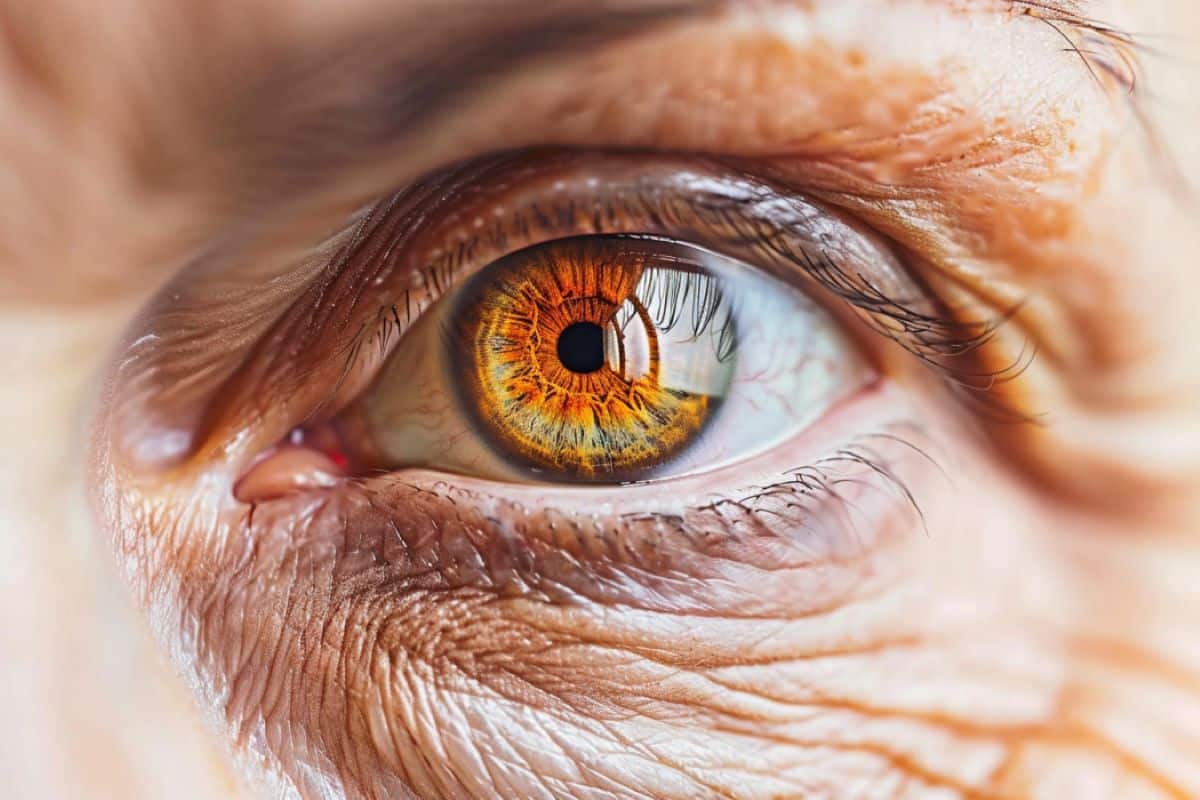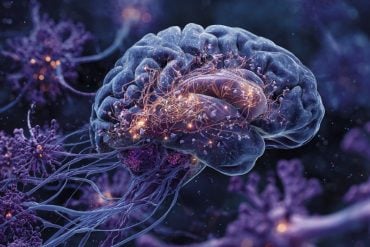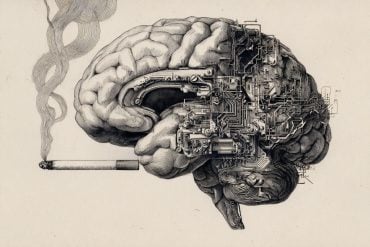Summary: Researchers found that daily antioxidant supplements slow the progression of late-stage dry age-related macular degeneration (AMD). The supplements help preserve central vision by slowing the expansion of geographic atrophy regions in the retina. This finding supports the use of AREDS2 supplements for people with late dry AMD.
Key Facts:
- Supplement Benefits: AREDS2 supplements slow the expansion of geographic atrophy by 55%.
- Study Details: Analysis included 1,209 eyes from AREDS and AREDS2 trials.
- Vision Preservation: Antioxidants help maintain central vision in late-stage dry AMD.
Source: NIH
In a new analysis of data, researchers at the National Institutes of Health (NIH) have found that taking a daily supplement containing antioxidant vitamins and minerals slows progression of late-stage dry age-related macular degeneration (AMD), potentially helping people with late-stage disease preserve their central vision.
Researchers reviewed the original retinal scans of participants in the Age-Related Eye Diseases Studies (AREDS and AREDS2) and found that, for people with late-stage dry AMD, taking the antioxidant supplement slowed expansion of geographic atrophy regions towards the central foveal region of the retina.

The study was published in the journal Ophthalmology.
“We’ve known for a long time that AREDS2 supplements help slow the progression from intermediate to late AMD. Our analysis shows that taking AREDS2 supplements can also slow disease progression in people with late dry AMD,” said Tiarnan Keenan, M.D., Ph.D., of NIH’s National Eye Institute (NEI) and lead author of the study.
“These findings support the continued use of AREDS2 supplements by people with late dry AMD.”
In their new analysis, the researchers reviewed the original retinal scans of participants in the AREDS (total 318 participants, 392 eyes) and AREDS2 (total 891 participants, 1210 eyes) trials who developed dry AMD, calculating the position and expansion rate of their regions of geographic atrophy.
For those people who developed geographic atrophy in their central vision, the supplements had little benefit. But for the majority who developed geographic atrophy far from the fovea, the supplements slowed the rate of expansion towards the fovea by approximately 55% over an average of three years.
In early and intermediate AMD, the light-sensing retina at the back of the eye develops small yellow deposits of fatty proteins called drusen. When the disease progresses to the late stage, people can develop leaky blood vessels (“wet” AMD) or can lose regions of light-sensitive cells in the retina (“dry” AMD). The geographic atrophy in these regions slowly expands over time, causing people to progressively lose their central vision.
The original AREDS trial found that a supplement formula containing antioxidants (vitamin C, E, and beta-carotene), along with zinc and copper, could slow progression of intermediate to late-stage AMD.
The subsequent AREDS2 trial found that substituting the antioxidants lutein and zeaxanthin for beta-carotene improved the efficacy of the supplement formula and eliminated certain risks. At the time, neither trial detected any further benefit once participants had developed late-stage disease.
However, that original analysis did not account for a phenomenon in the dry form of late AMD called “foveal sparing.” While all regions of the retina are sensitive to light, the region that gives us the highest acuity central vision is called the fovea.
Many people with dry AMD first develop geographic atrophy outside this foveal region, and they only lose their central vision when the geographic atrophy regions expand into the foveal area.
“Our high acuity central vision is essential for tasks like reading and driving. Given that there are few therapeutic options for people with late-stage dry AMD to retain or restore their vision, antioxidant supplementation is a simple step that may slow central vision loss, even for those with late disease,” Keenan said.
“We plan to confirm these findings in a dedicated clinical trial in the near future.”
Funding:
Study authors include Keenan, Elvira Agrón, and Emily Chew, M.D. from NEI, Pearse Keane, M.D. from Moorfields Eye Hospital, U.K., and Amitha Domalpally, M.D., Ph.D., University of Wisconsin-Madison. The research was supported by the NEI Intramural Research Program.
Funding for the AREDS and AREDS2 studies, under contracts NOI-EY-0-2127, HHS-N-260-2005-00007-C and N01-EY-5-0007, were provided by NEI and the NIH Office of Dietary Supplements, the National Center for Complementary and Alternative Medicine, the National Institute on Aging, the National Heart, Lung, and Blood Institute, and the National Institute of Neurological Disorders and Stroke.
The AREDS and AREDS2 studies, clinicaltrials.gov numbers NCT00000145 and NCT00345176, respectively, were conducted at the NIH Clinical Center.
About this AMD and visual neuroscience research news
Author: Lesley Earl
Source: NIH
Contact: Lesley Earl – NIH
Image: The image is credited to Neuroscience News
Original Research: Open access.
“Oral antioxidant and lutein/zeaxanthin supplements slow geographic atrophy progression to the fovea in age-related macular degeneration” by Tiarnan Keenan et al. Ophthalmology
Abstract
Oral antioxidant and lutein/zeaxanthin supplements slow geographic atrophy progression to the fovea in age-related macular degeneration
Purpose
To update the Age-Related Eye Disease Study (AREDS) simplified severity scale for risk of late age-related macular degeneration (AMD), including incorporation of reticular pseudodrusen (RPD), and to perform external validation on the Age-Related Eye Disease Study 2 (AREDS2).
Design
Post hoc analysis of 2 clinical trial cohorts: AREDS and AREDS2.
Participants
Participants with no late AMD in either eye at baseline in AREDS (n = 2719) and AREDS2 (n = 1472).
Methods
Five-year rates of progression to late AMD were calculated according to levels 0 to 4 on the simplified severity scale after 2 updates: (1) noncentral geographic atrophy (GA) considered part of the outcome, rather than a risk feature, and (2) scale separation according to RPD status (determined by validated deep learning grading of color fundus photographs).
Main Outcome Measures
Five-year rate of progression to late AMD (defined as neovascular AMD or any GA).
Results
In the AREDS, after the first scale update, the 5-year rates of progression to late AMD for levels 0 to 4 were 0.3%, 4.5%, 12.9%, 32.2%, and 55.6%, respectively. As the final simplified severity scale, the 5-year progression rates for levels 0 to 4 were 0.3%, 4.3%, 11.6%, 26.7%, and 50.0%, respectively, for participants without RPD at baseline and 2.8%, 8.0%, 29.0%, 58.7%, and 72.2%, respectively, for participants with RPD at baseline. In external validation on the AREDS2, for levels 2 to 4, the progression rates were similar: 15.0%, 27.7%, and 45.7% (RPD absent) and 26.2%, 46.0%, and 73.0% (RPD present), respectively.
Conclusions
The AREDS AMD simplified severity scale has been modernized with 2 important updates. The new scale for individuals without RPD has 5-year progression rates of approximately 0.5%, 4%, 12%, 25%, and 50%, such that the rates on the original scale remain accurate. The new scale for individuals with RPD has 5-year progression rates of approximately 3%, 8%, 30%, 60%, and 70%, that is, approximately double for most levels. This scale fits updated definitions of late AMD, has increased prognostic accuracy, seems generalizable to similar populations, but remains simple for broad risk categorization.
Financial Disclosure(s)
Proprietary or commercial disclosure may be found in the Footnotes and Disclosures at the end of this article.






